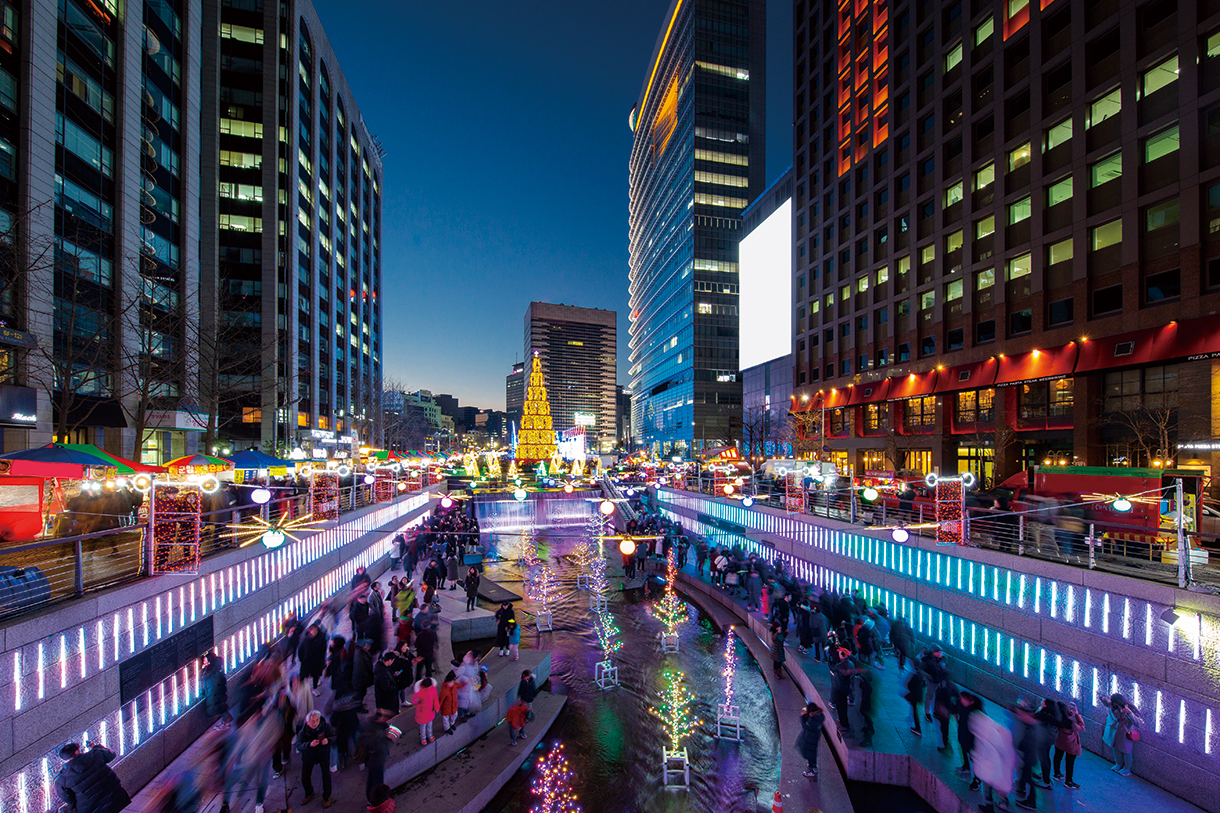

Story
환경개선과 상권 활성화,
두 마리 토끼 잡는 ‘공공디자인’
Improving the Environment and Revitalizing Commercial Areas:
Design that Catches Two Birds with One Stone
ERICA캠퍼스 산업디자인학과 김태선 교수
Prof. Taesun Kim, Department of Industrial Design at ERICA Campus
- 글 박영임
- 사진 이현구
- Writing Park Yeong-im
- Photograph Lee Hyeon-gu
Scroll Down
Since it was created under the Banwol New Industrial City construction plan in the 1970s, Ansan City has become the city with the highest number of foreign residents in the country. Presently, it is undergoing a transformation to enhance the old parts of the planned city and promote robotics industry. Professor Taesun Kim — who spearheaded the Ansan City-Hanyang University ERICA Public Design Laboratory in partnership with Ansan City for the Revitalization of the Multicultural Village Special Zone Project — stressed the pivotal role of design thinking and public design in addressing societal challenges.
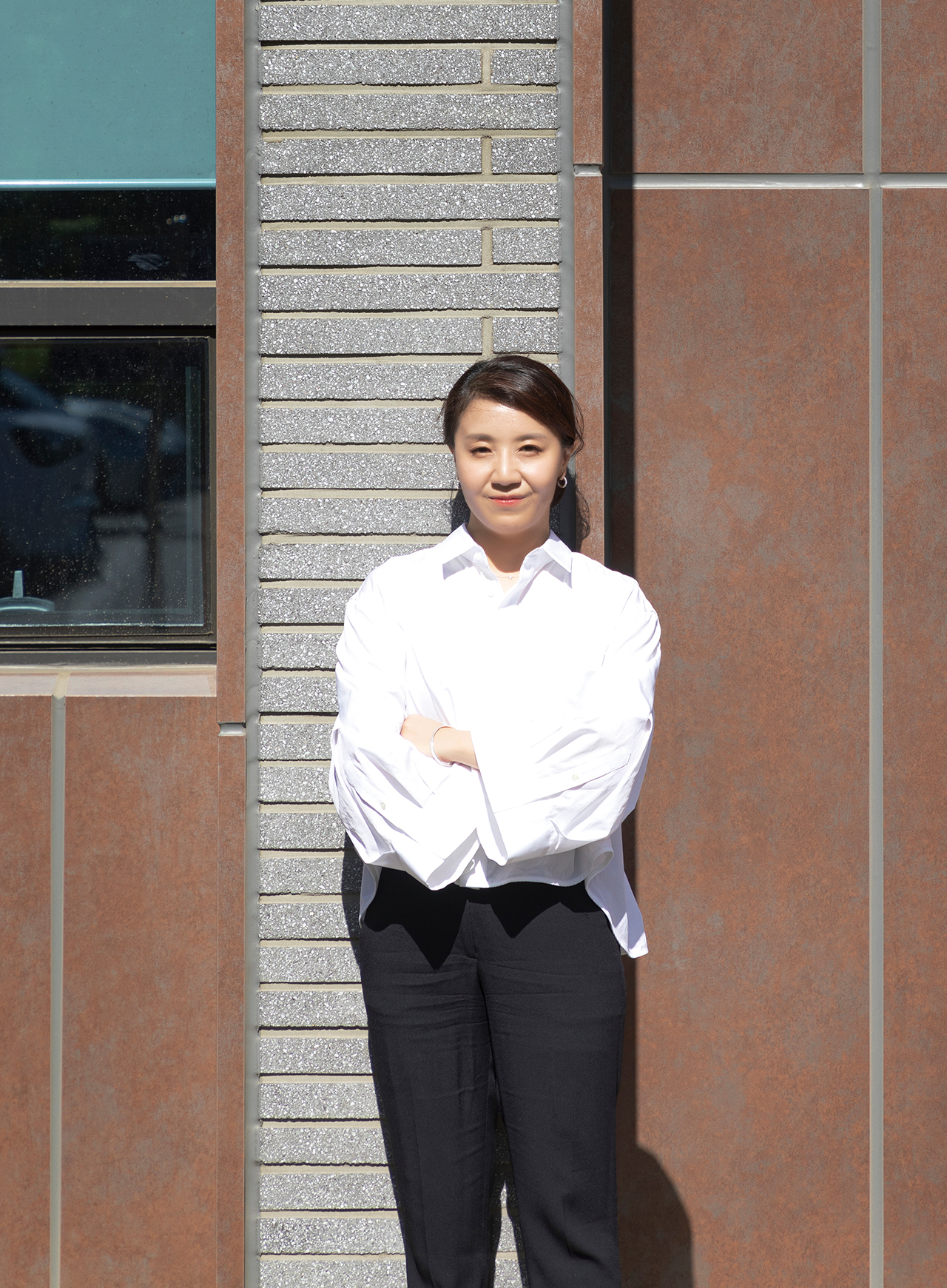
특명! 안산다문화마을특구를 부활시켜라
디자이너의 사고법을 의미하는 ‘디자인 싱킹(Design thinking)’은 디자인 분야는 물론, 다양한 산업 분야로 확산됐다. 최근에는 사회문제 해결에도 적용되고 있다. 김태선 교수는 이 디자인 싱킹으로 다양한 도시문제의 해법을 찾고, 도시환경 개선에도 이바지할 수 있다고 말한다.
“디자인 싱킹을 한마디로 정의하기는 어렵지만, 사용자 관점에서 다각적으로 접근해 문제를 해결하는 디자이너의 혁신적인 사고방식을 가리킵니다. 융합적인 접근법이자 사람을 중심에 놓고 어떤 부분에서 어려움을 느끼며, 왜 그렇게 행동하는 것인지 원인을 찾고 해결법을 모색하는 것입니다.”
김태선 교수는 디자인 싱킹으로 도농 지역의 119 구급 서비스 개선 방법에 대해 연구한 바 있다. 농촌 지역은 지리적으로 소방서가 떨어져 있는 경우가 많고, 도시 지역은 교통 체증으로 도착 시간이 지연되는 경우가 많다. 그래서 구급대원들의 이동 상황을 체계적으로 관리할 수 있도록, 출동한 구급대원들의 현재 위치와 임무 수행 여부를 직관적으로 알 수 있는 시각화 시스템을 제안해 호평을 얻었다. 이러한 디자인 싱킹으로 지난 학기부터는 경기도 안산시 단원구 원곡동에 조성된 다문화마을특구의 환경개선 프로젝트에 돌입했다.
“안산다문화마을특구는 반월공단이 들어서며 유입된 외국인 노동자들에 의해 자연스럽게 형성된 곳입니다. 일을 마친 외국인 노동자들이 주말에 모이며 특색 있는 마을이 됐죠. 하지만 코로나19와 공장 자동화로 노동자들이 줄면서 상권이 쇠퇴하고 있습니다. 한양대 ERICA캠퍼스에도 외국인 유학생이 많은데, 그 학생들의 시각으로 새롭게 디자인하면 더 쾌적한 환경으로 개선할 수 있지 않을까 싶어 안산시청을 찾았습니다.”
김태선 교수의 제안으로 지난 3월 한양대 ERICA캠퍼스 디자인대학은 안산시 외국인주민지원본부와 ‘안산다문화마을특구 환경개선 및 공동체 활성화를 위한 지속적인 협력’을 약속하고 협약을 맺었다. 그리고 ‘다문화마을특구 활성화를 위한 안산시-한양대 ERICA 공공디자인실험실(이하 공공디자인실험실)’ 사업을 전개했다. 그 일환으로 지난 학기에는 대학 교과목 ‘UX디자인’과 대학원 교과목 ‘소셜디자인워크샵’을 다문화마을특구 환경개선을 위한 IC-PBL(산학 연계형 문제 기반 학습)로 진행했다.
“아이덴티티 구축, 거리 정화 등 몇 가지 의제로 나눈 뒤, 다시 조별로 야간 경관, 슈퍼 그래픽(벽이나 건물 등의 대형 그림), CCTV 디자인 같은 세부 의제를 발굴해 해당 문제를 해결하기 위한 디자인을 제시했습니다.”
Special mission: Revive the Ansan Multicultural Village Special Zone
"Design thinking," originally a method employed by designers, has extended its influence beyond the realm of design and permeated numerous industrial sectors. Recently, it has even been harnessed to address societal challenges. According to Professor Taesun Kim, this approach to design thinking holds promise for tackling myriad urban issues and enhancing the urban environment.
"It is difficult to define design thinking in a single word, yet at its core, it embodies a designer's inventive approach to problem-solving, characterized by a multi-dimensional perspective rooted in the user's experience. This interdisciplinary approach focuses on people, probing into the root causes of their difficulties and behaviors, ultimately yielding solutions."
Professor Taesun Kim has used design thinking to study how to improve emergency services in urban and rural areas. In rural areas, the challenge often lies in the geographical dispersion of fire stations, while urban areas face delays in response times due to traffic congestion. To address these issues and streamline the management of paramedic movements, Professor Kim introduced a visualization system. This system offers an intuitive means of tracking the current locations of dispatched paramedics and monitoring their task execution, garnering positive feedback. Utilizing this design thinking approach, Professor Kim initiated an environmental improvement project for the multicultural village special zone established in Wongok-dong, Danwon-gu, Ansan City, Gyeonggi-do starting last semester.
“The Ansan Multicultural Village Special Zone naturally formed due to the influx of foreign workers during the construction of the Banwol Industrial Complex. Over time, it evolved into a distinctive community, with foreign workers frequently gathering here during their leisure hours. However, the neighborhood's commercial sector has experienced a decline, stemming from the reduced workforce due to COVID-19 and increased automation in factories. Recognizing the vibrant presence of foreign students at Hanyang University's ERICA Campus, I felt compelled to visit Ansan City Hall to explore new student-driven design approaches aimed at improving the local environment.”
At the suggestion of Professor Kim, the College of Design at Hanyang University's ERICA Campus partnered with the Ansan City Foreign Resident Support Center in March. They committed themselves to ongoing cooperation for improving the Ansan Multicultural Village Special Zone. This collaboration led to the launch of the Ansan City-Hanyang University ERICA Public Design Laboratory project, aimed at revitalizing the area.
Last semester, the university offered UX Design and the graduate school provided Social Design Workshop courses, both utilizing an IC-PBL (industry-academia- linked, problembased learning) approach to enhance the environment of the multicultural village special zone.
"After each group divided into several agendas, including identity-building and street cleanups, they further identified specific tasks such as enhancing the night scenery, creating super graphics (large pictures on walls or buildings), and designing CCTV systems. They then presented their respective designs aimed at addressing these issues."
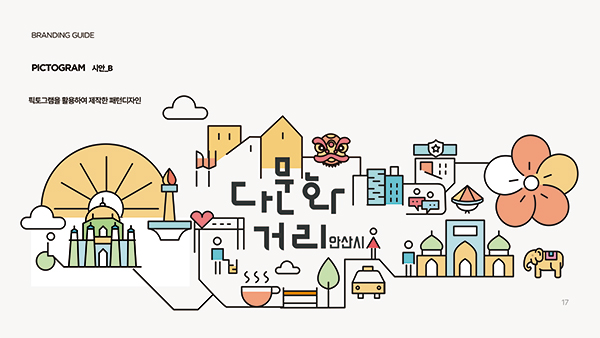
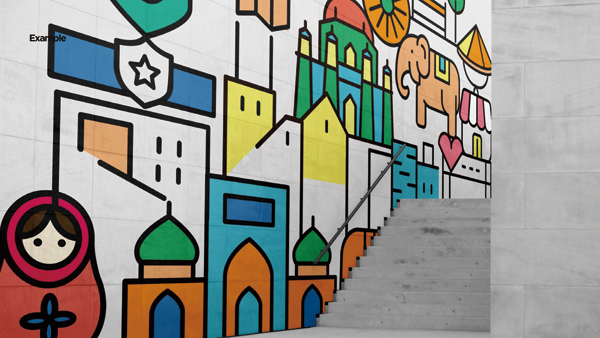

디자이너 시각으로 도시 바라보기
이렇게 한 학기 동안 100여 명의 학생이 다문화마을특구를 활성화하기 위해 1만여 시간을 투입했다. 그리고 지난 7월, 이 디자인 결과물을 발표하는 자리가 마련됐다. 국가별 상징과 브랜딩, 상점별 셔터 디자인, 사인물 디자인, 관광 활성화를 위한 축제 디자인 등 흥미로운 결과물이 많아 안산시 관계자들로부터 좋은 반응을 얻었다.
특히 안산시에서 반겼던 결과물은 버스정류장 또는 지하보도 벽면을 통일된 이미지로 산뜻하게 꾸미는 슈퍼 그래픽이었다. 안산역과 안산다문화마을특구 사이에는 10차선 도로가 있어 그 밑을 연결하는 지하보도를 이용해야 한다. 이곳을 밝은 분위기로 탈바꿈시킬 수 있는 아이디어였기에 큰 호응을 얻었다. 안산시는 ERICA캠퍼스와 함께한 공공디자인실험실 결과물을 기반으로 경기도에서 주관하는 ‘경기 더드림 재생사업’에 선정돼 도로 개선 등 학생들의 제안을 적극 반영할 예정이다.
그 밖에 거리 바닥에 야광 페인트로 국가별 전통 패턴을 도색해 밤거리를 비추거나, 거리의 벤치를 인도네시아의 ‘차투랑가’, 중국의 ‘샹치’, 러시아의 ‘고블렛 고블러스’ 같은 국가별 보드게임으로 디자인하고 직접 놀이를 즐길 수 있도록 한 아이디어도 좋은 반응을 이끌었다. 이렇게 다양한 아이디어를 발굴할 수 있었던 데에는 외국인 유학생들의 활약이 컸다. 이들이 활발히 참여해 자료조사나 현장 인터뷰를 더욱 수월하게 진행할 수 있었다. 한편 ‘맛탕’이라는 세계 음식 축제를 개최한다는 아이디어도 있었는데, 공공디자인이 단순히 거리나 건물, 설치물에 국한되지 않음을 보여주는 사례다.
“공공디자인의 범위는 유형(하드웨어)뿐 아니라 무형(소프트웨어)의 시스템, 커뮤니티까지 포함하는 것입니다. 도시환경이 개선되면 낙후된 환경과 침체한 상권을 활성화할 수 있습니다. 거리가 깨끗하고 밝아지면 사람들이 많이 모이고 범죄도 감소해 사회문제를 해결하는 데 기여할 수 있습니다.”
Viewing the City from a Designer’s Perspective
Throughout the semester, approximately 100 students collectively dedicated around 10,000 hours toward rejuvenating the multicultural village special zone. In July of the same year, an event was organized to showcase the outcomes of this design effort.
The results were intriguing, encompassing symbols and branding for each country, customized shutter designs for storefronts, signage designs, and festival concepts to boost tourism. These proposals received favorable reactions from Ansan City officials.
Ansan City especially welcomed the super graphic concept, which invigorated the appearance of bus stops and underground sidewalk walls with a unified image. This idea was particularly significant because it transformed the underground sidewalk connecting Ansan Station and the Multicultural Village Special Zone, turning it into an inviting, vibrant space. Ansan City's success in being selected for the Gyeonggi The Dream Regeneration Project, hosted by Gyeonggi Province, was based on the achievements of the public design laboratory with ERICA Campus. They plan to actively incorporate student suggestions, including road improvements.
In addition, the students added country-specific traditional patterns with luminous paint on the streets for nighttime illumination. Street benches now feature board games representing each country, such as Indonesia's Chaturanga, China's Shangqi, and Russia's Goblet Gobblers — thereby creating an interactive and enjoyable experience for passersby.
International students played a crucial role in generating these ideas, assisting in data research and field interviews. Furthermore, a student proposed a world food festival, "Mattang," demonstrating the idea that public design encompasses more than just streets, buildings, or installations — and showcasing the broader scope of students’ endeavors.
The realm of public design encompasses not only tangible aspects, such as hardware, but also intangible elements like software systems and communities. Enhancing the urban environment has the potential to rejuvenate underdeveloped areas and revitalize slackening commercial districts. A clean and well-lit streetscape not only attracts more people but also has the potential to reduce crime rates and address social issues.
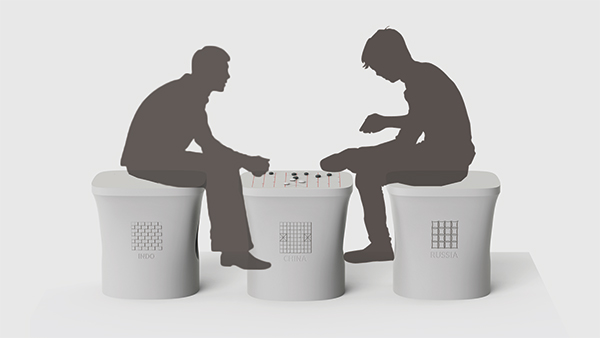
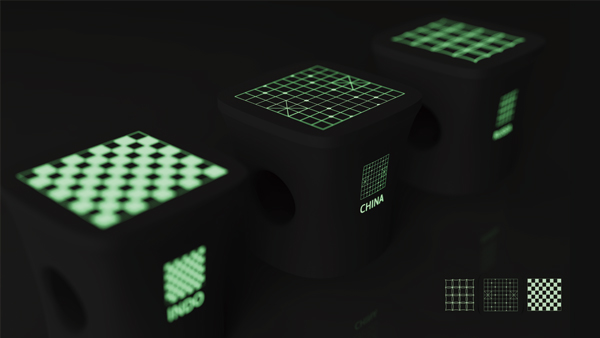
공공디자인의 개념은 유형뿐 아니라 무형의 시스템, 커뮤니티까지 포함하는 것이다. 그 공간에서 살아가는 사람들을 위한 디자인 싱킹이 필요하다
Public design encompasses not only tangible aspects, but also intangible elements like software systems and communities. Design-thinking is needed for the people who live in such spaces.
자발적 콘텐츠 생산이 지속성의 핵심
이렇게 디자인 싱킹을 통해 도시환경을 개선한 사례는 해외에서도 많이 찾아볼 수 있다. 하지만 유형과 무형이 잘 어우러진 사례는 찾기 어렵다고 말하는 김태선 교수.
“뉴욕 맨해튼의 도시재생사업으로 탄생한 ‘허드슨 야드’와 버려진 철도를 리모델링해 만든 ‘하이라인파크’는 흔히 알고 있는 하드웨어 중심의 시설물 개선 사례입니다. 그리고 일본의 유명한 커뮤니티 디자이너 야마자키 료의 ‘이에시마 프로젝트’나 ‘마루야가든즈’ 등은 소프트웨어 중심의 사례죠. 도시환경 개선 효과가 지속되려면 이 두 가지가 결합돼야 합니다.”
아무리 대규모 자금을 투여하고 유명 건축가가 디자인한 건축물이라도 처음에만 이목을 끌 뿐, 시간이 지남에 따라 사람들의 발길이 뜸해진다면 자발적인 운용 시스템이나 자체 콘텐츠가 부재하기 때문이다. 도시환경 개선은 반짝 스포트라이트를 받고 말 일이 아니다. 그 공간에서 거주하고 활동하는 이들의 지속적인 삶의 터전이 돼야 한다. 그러려면 두 가지 요소가 모두 뒷받침돼야 한다.
“결국은 그 공간의 사람들을 위한 콘텐츠 디자인이 있어야 하고, 새로운 콘텐츠가 꾸준히 생산돼야 합니다. 그러면서 정체성을 찾아가는 것이죠. 많은 돈을 들인 공공디자인들이 실패하는 것은 콘텐츠가 결여됐기 때문입니다. 우연인지 필연인지 모르겠으나 최근 들어 시민주도의 마을만들기, 사회혁신 디자인 등이 활성화하고 있습니다. 시민의 공조(共助)로 공공(公共)의 이익을 위해 수행되는 글자 그대로 공공(公共)디자인인 것이죠. 우리나라는 수십 년 동안 공공(公共)의 이름으로, 정부 주도의 공공(公空)사업을 진행해 왔어요. 이제는 공공(公空)에서 공공(公共)으로, 진정한 가치를 이뤄나갈 때라고 생각합니다.”
그래서 ERICA캠퍼스 디자인대학은 안산시와의 공공디자인실험실을 한 학기 수업으로 그치지 않고 계속 이어 나갈 방침이다. 다음 학기에는 새로운 학생들이 또 다른 문제들을 발굴하고 이를 해결할 새로운 디자인 해법을 제시할 것이다. 안산다문화마을특구가 활기를 되찾기를 바란다는 김태선 교수는 도시환경 개선에 기여하는 디자인 싱킹이 비단 디자이너에게만 요구되는 것이 아니라고 전했다.
“관심을 두고 주위를 찬찬히 둘러보면 문제가 보입니다. 그러지 않기 때문에 보이지 않는 것이죠. 대상에 대한 깊은 이해를 위해서는 공감력이 중요합니다. 그런데 사실 누구나 공감력을 가지고 있어요. 전공이 무엇이든지 한양인들 모두 디자인 싱킹의 관점을 키우길 바랍니다. 누구나 우리가 살아가는 도시를 살리는 디자이너가 될 수 있습니다.”
김태선 교수는 안산다문화마을특구뿐 아니라 안산시의 가로수를 개선해 걷기 좋은 거리를 조성하고 싶다는 생각도 피력했다. 이와 더불어 안산시 관광과와도 협력해, 공공디자인으로 안산시의 가치를 높이고 관광 인프라 조성에도 기여할 계획이다. 이제 막 시작된 ERICA캠퍼스 디자인대학의 공공디자인실험실이 어떤 도시의 미래를 그려낼지 기대된다.
Spontaneous Content Production is the Key to Sustainability
While numerous instances of urban environment improvements through design thinking can be found abroad, Professor Taesun Kim highlights the rarity of well-integrated examples encompassing both tangible and intangible aspects.
Key cases include the Hudson Yards and High Line Park in Manhattan, New York, emphasizing hardware-centered facility enhancements. In contrast, Japanese community designer Ryo Yamazaki's projects, such as the IESHIMA Project and Maruya Gardens, exemplify software-focused approaches. Professor Kim stresses the significance of combining both hardware and software elements for sustainable urban environment enhancements.
Large investments or the involvement of a renowned architect may initially capture attention. However, the long-term success hinges on the presence of a self-sustaining operational model and engaging content. Enhancing the urban environment is not a one-off spectacle; it should evolve into a lasting haven for residents and workers in that area. Achieving this requires robust support for both these essential elements.
“Ultimately, it comes down to crafting tailored content and consistently producing new material for the people in that space to find their identity. High-cost public designs often fail due to a lack of meaningful content. Recently, citizen-driven village development and social innovation design have gained momentum, epitomizing public design in the public's interest with active citizen participation. For decades, our country has undertaken government-led public projects under the name of 'the public.' Now, it's time to broaden the meaning of 'public' projects to encompass not just government-led ones, but also collective, community-led ones.”
Hence, the College of Design at ERICA Campus intends to sustain its public design laboratory collaboration with Ansan City, eschewing a one-semester approach. In the upcoming semester, fresh gatherings of students will explore additional challenges, and come up with novel design remedies. Professor Taesun Kim, aspiring for the revival of the Ansan Multicultural Village Special Zone, highlights his belief that design thinking is a core skill not limited to designers alone.
"Close observation can reveal hidden issues that might otherwise go unnoticed. These problems aren't concealed; they are simply undiscovered. Empathy is a key element in gaining deep insights into any subject, and in reality, everyone possesses empathy. Regardless of their area of study, I encourage all Hanyang students to foster a designthinking mindset. Every individual has the potential to become a designer who can contribute to improving our community."
Professor Taesun Kim expressed a strong desire to enhance the pedestrian experience by improving street trees — not only within Ansan City, but also within the Ansan Multicultural Village Special Zone.
Furthermore, Professor Kim intends to collaborate with the Ansan City Tourism Department to elevate the overall appeal of Ansan City through public design and facilitate the development of tourism infrastructure. As the ERICA Campus Design College's public design laboratory, in its early stages, continues to evolve, there is great anticipation for the future of urban development.
